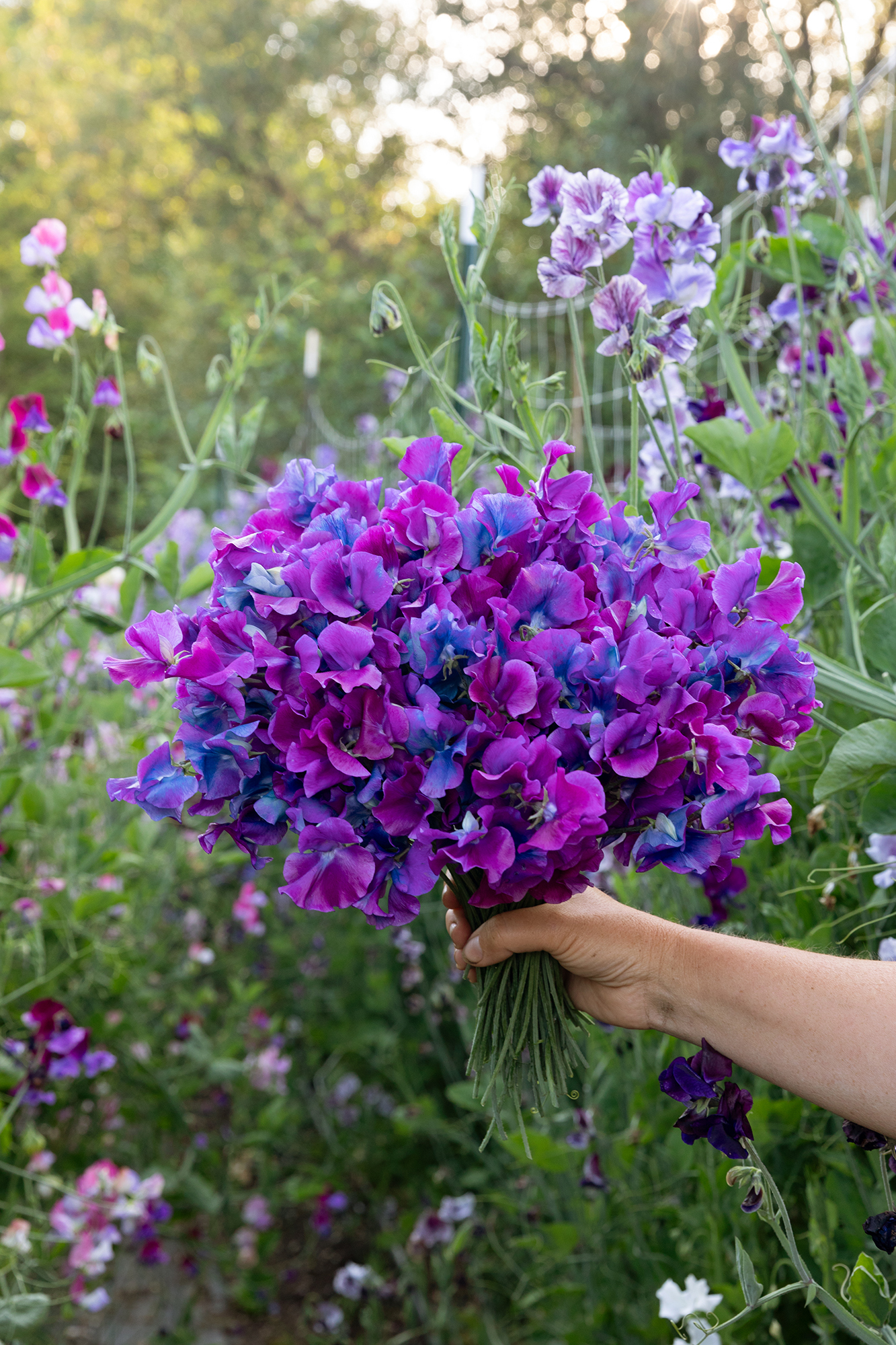If sweet peas had a fan club, we’d be running it. With their fluttery petals, romantic tendrils, and that intoxicating fragrance that practically begs you to bury your nose in a bouquet, what’s not to love? But here’s a little-known secret: The best way to get a jumpstart on a dreamy spring garden is to plant sweet pea seeds soon. Fall planting leads to stronger, earlier, and even more abundant blooms—if you time it right.
To help us master the art of sweet pea sowing, we turned to Marryn Mathis, author of Sweet Pea School: Growing and Arranging the Garden’s Most Romantic Blooms. With her expert guidance, you’ll have everything you need to set yourself up for a spectacular, bloom-filled spring. And trust us, once you see those first frilly petals unfurl, you’ll be head of the fan club, too.
1. Know Your Zone Before You Sow
From “Sweet Pea School: Growing & Arranging the Garden’s Most Romantic Blooms” by Marryn Mathis, © 2025. Photographs © Christine Chitnis. Published by Chronicle Books.
Before planting, check your USDA growing zone—fall sowing works best in zones eight and above. “If you’re in zones seven and below, it’s best to wait until late winter to ensure success,” Marryn says. They need time to establish before winter temperatures set in.
2. Provide the Perfect Cool-Weather Home

From “Sweet Pea School: Growing & Arranging the Garden’s Most Romantic Blooms” by Marryn Mathis, © 2025. Photographs © Christine Chitnis. Published by Chronicle Books.
Sweet peas thrive in 50 to 55°F soil temperatures and can handle frost without issue. “When sweet peas are fall-sown and ‘grown cold,’ plants are very tough and can handle a freeze,” says Marryn. However, if your winter temperatures regularly dip below 20°F, consider planting in a hoophouse or greenhouse for protection. For those planting directly outdoors, a simple frost cloth can safeguard against unexpected cold snaps.
3. Timing Is Everything
The biggest mistake new gardeners make? “Not taking their growing zone into consideration,” says Marryn. Fall sowing isn’t for everyone—if your winters are too harsh, wait until late winter to plant. But for gardeners in mild climates, planting before winter hits is key. “Fall-sown plants grow slower over the winter, so a bit of patience is good to have as well,” she adds.
4. Cut and Come Again

From “Sweet Pea School: Growing & Arranging the Garden’s Most Romantic Blooms” by Marryn Mathis, © 2025. Photographs © Christine Chitnis. Published by Chronicle Books.
Once your sweet peas start flowering, keeping them going is all about consistent harvesting. “The more you pick, the more they bloom,” Marryn advises. Cutting bouquets regularly encourages plants to keep producing well into summer. Besides, who doesn’t want little bursts of blooms throughout the house?
Buy the Book

Chronicle Books
We only recommend things we love. If you buy something through our site, we might earn a commission.



